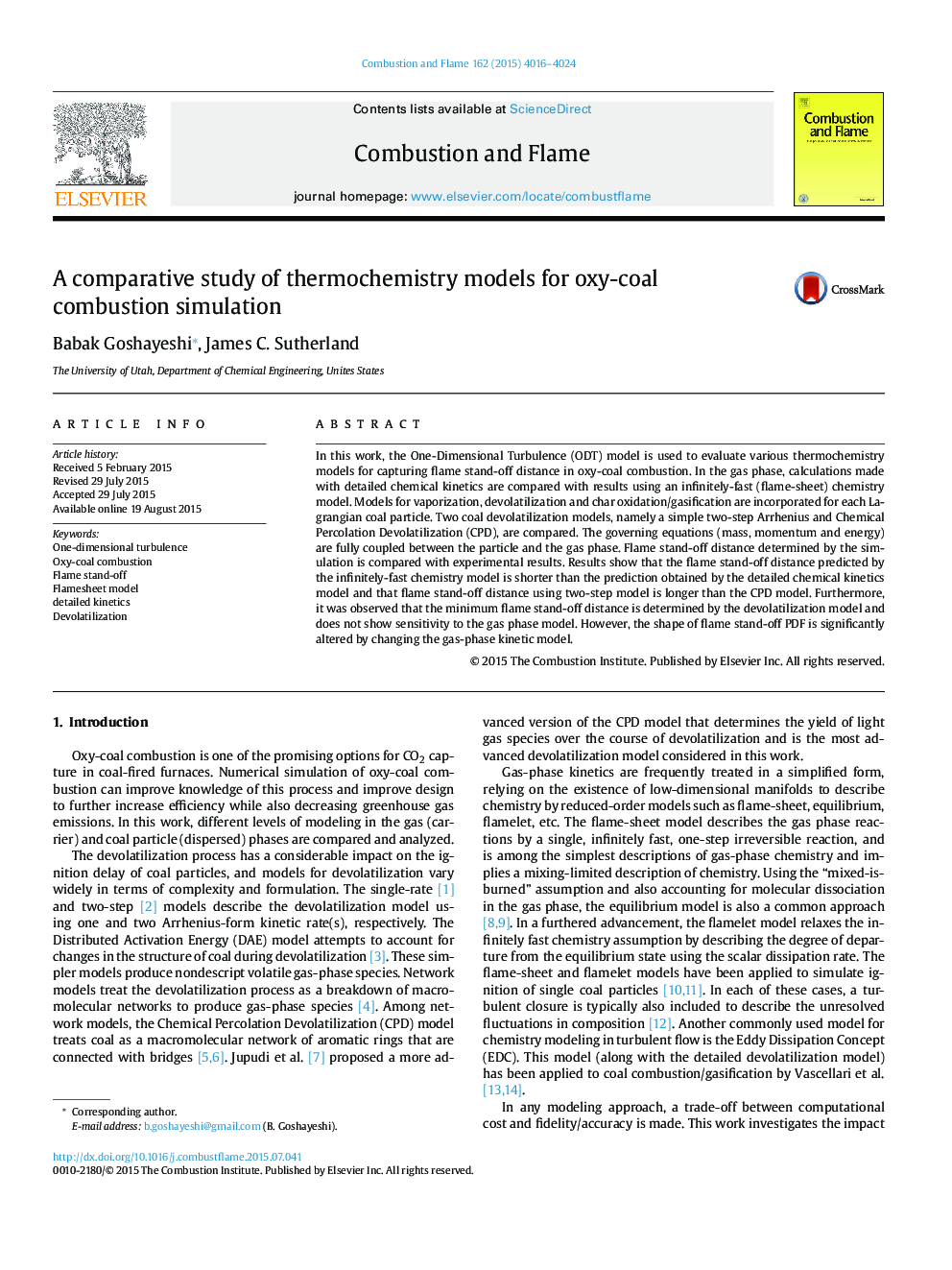| Article ID | Journal | Published Year | Pages | File Type |
|---|---|---|---|---|
| 10264791 | Combustion and Flame | 2015 | 9 Pages |
Abstract
In this work, the One-Dimensional Turbulence (ODT) model is used to evaluate various thermochemistry models for capturing flame stand-off distance in oxy-coal combustion. In the gas phase, calculations made with detailed chemical kinetics are compared with results using an infinitely-fast (flame-sheet) chemistry model. Models for vaporization, devolatilization and char oxidation/gasification are incorporated for each Lagrangian coal particle. Two coal devolatilization models, namely a simple two-step Arrhenius and Chemical Percolation Devolatilization (CPD), are compared. The governing equations (mass, momentum and energy) are fully coupled between the particle and the gas phase. Flame stand-off distance determined by the simulation is compared with experimental results. Results show that the flame stand-off distance predicted by the infinitely-fast chemistry model is shorter than the prediction obtained by the detailed chemical kinetics model and that flame stand-off distance using two-step model is longer than the CPD model. Furthermore, it was observed that the minimum flame stand-off distance is determined by the devolatilization model and does not show sensitivity to the gas phase model. However, the shape of flame stand-off PDF is significantly altered by changing the gas-phase kinetic model.
Related Topics
Physical Sciences and Engineering
Chemical Engineering
Chemical Engineering (General)
Authors
Babak Goshayeshi, James C. Sutherland,
